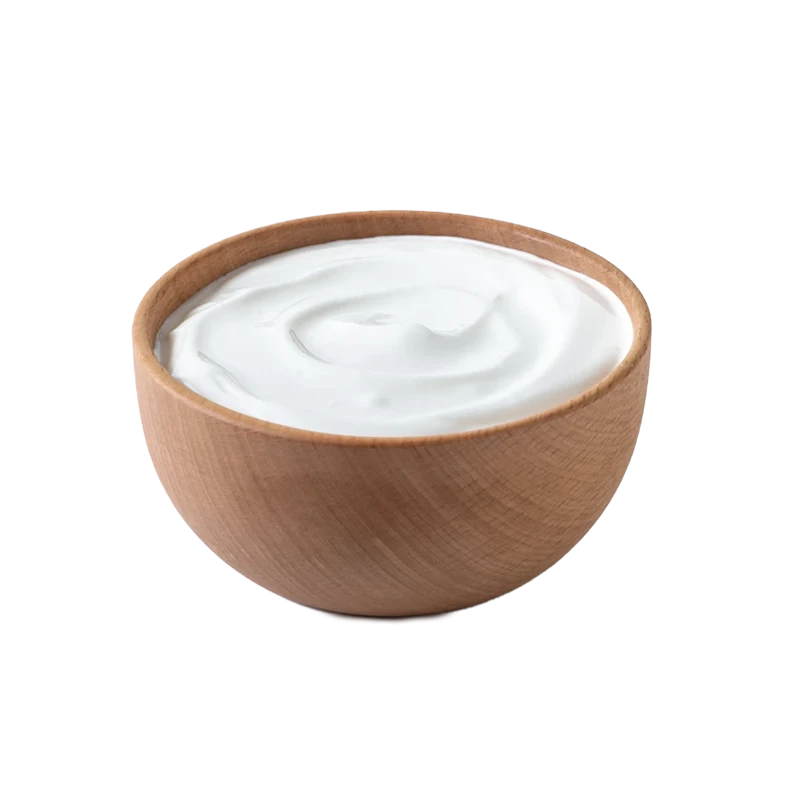Cream — Nutrients, Health Benefits, And Shopping Tips

Written by Listonic Team
Last update on September 4, 2024
Nutrients
Nutrition facts
Amount per 100 g
Calories
🔥 342 kcal
| Nutrition per: 100 g | Value | % Daily Value* |
|---|---|---|
| Carbs | 3 g | 1.09% |
| Fiber | 0 g | - |
| Sugars | 3 g | 6% |
| Glycemic Index | 30 | - |
| Protein | 2 g | 4% |
| Sodium | 38 mg | 1.65% |
| Total Fat | 36 g | 46.15% |
*The % of Daily Value (DV) tells you how much a nutrient in a serving of food contributes to a daily diet. 2,000 calories a day is used for general nutrition advice.
30
🟢 Low Glycemic Index
3 g
⬇️ Low Carb Content
Key takeaways
Health benefits
- Rich in healthy fats, which provide energy and support cell function.
- High in calcium, essential for strong bones and teeth, and reducing the risk of osteoporosis.
- Contains fat-soluble vitamins such as Vitamin A, D, E, and K, which are important for various bodily functions, including vision, immune function, and bone health.
- Enhances flavor and texture in dishes, making meals more enjoyable and satisfying.
- Can support weight gain for those needing to increase calorie intake, such as individuals recovering from illness or with high energy needs.
Health risks
- High saturated fat content which can contribute to increased cholesterol levels and raise the risk of heart disease when consumed frequently or in large amounts.
- High calorie content which can contribute to weight gain if not consumed in moderation, particularly when added to calorie-dense foods or beverages.
- Potential for lactose intolerance symptoms such as bloating, gas, or diarrhea in individuals sensitive to dairy products.
- Risk of overconsumption due to the rich and indulgent nature of cream, leading to excessive calorie intake.
How to choose cream
Cream should be smooth with a uniform consistency and a fresh, sweet smell. It should blend easily into coffee or recipes without curdling. Stir the cream to check for any lumps or separation, which should not occur.
Avoid cream that has a sour smell or shows signs of separation in the container, as this can indicate it is beginning to spoil. Quality cream should be velvety and enrich dishes with its texture and flavor.

How to store cream
Cream should be stored in the refrigerator immediately after purchase. Keep it in its original container or transfer to an airtight one. Properly stored, cream can last up to a week.
Exposure to air can cause cream to spoil quickly. Avoid leaving it out for extended periods. Ensure the container is tightly sealed to maintain its freshness and prevent contamination. Shake well before use to ensure even consistency.
✅ Extra Tip
How long does it last?
Cream can last for 1-2 weeks in the refrigerator once opened. Always check the expiration date on the packaging for the best quality. For longer storage, cream can be frozen for up to 2-3 months, although its texture may change upon thawing.
What to do with leftovers?
Leftover cream can be used in a variety of rich and creamy dishes. Whip it into whipped cream to top desserts like pies, cakes, or hot cocoa, or use it to make a creamy sauce for pasta or meats. Cream is also great in baking, where it adds richness to cakes, scones, or biscuits.
Use cream in a soup or chowder to create a velvety texture, or mix it into a mashed potato or vegetable puree for extra creaminess. If you have a lot of cream, consider making a batch of homemade ice cream or using it in a custard or pudding for a comforting dessert. Cream can also be added to coffee or tea for a luxurious treat, or used to make a rich, buttery sauce for seafood or pasta. For a quick and elegant dessert, whip cream with a touch of sugar and vanilla, then serve it with fresh berries or fruit.
👨⚕️️ Medical disclaimer
Discover products from other categories
Listonic Team
Fact-checked
Our editorial team checked this article to make sure it was accurate at the time of publishing it.
Get the top-rated shopping list app

cream
1 piece







